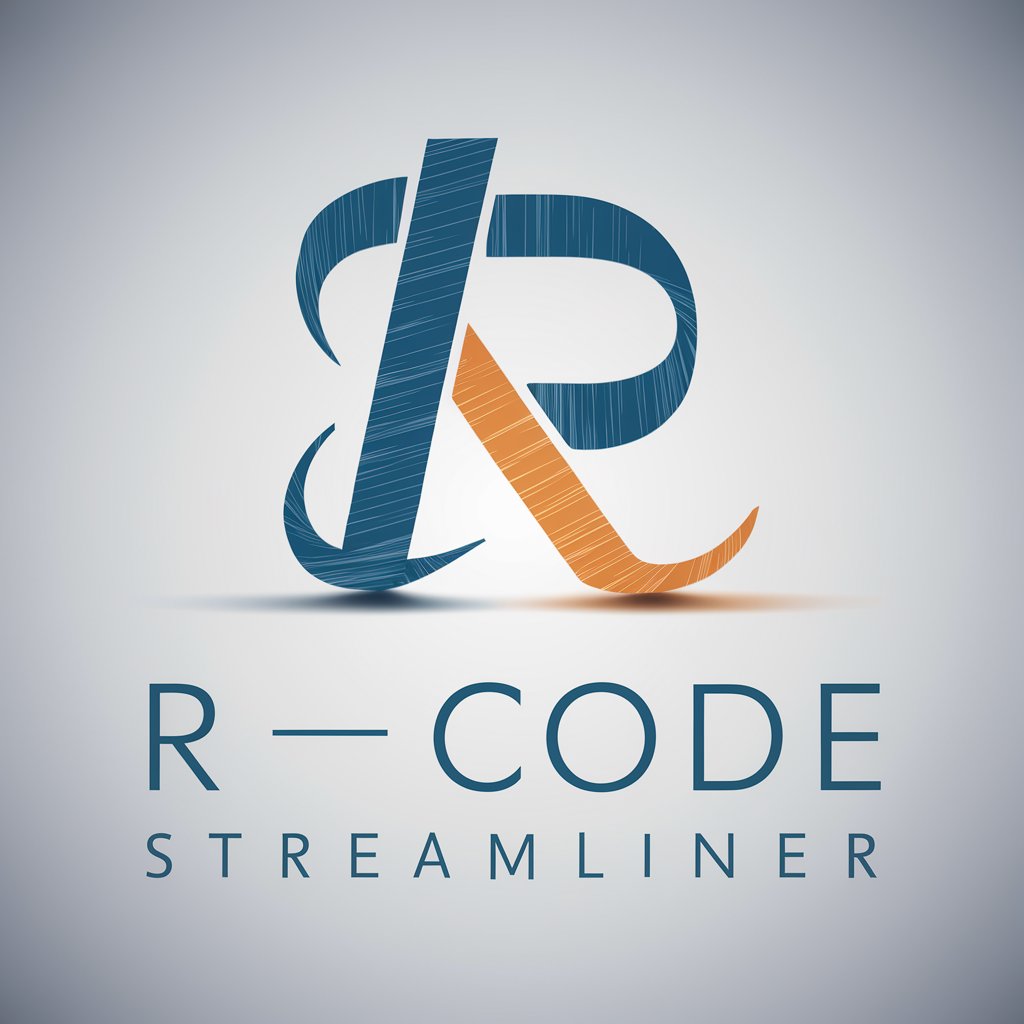R Code Streamliner - R Code Optimization

Ready to streamline your R coding tasks!
Streamline R coding with AI power
Generate an R script that performs data cleaning for a given dataset...
Create an R function to visualize data using ggplot2 with custom aesthetics...
Write R code to perform a linear regression analysis and interpret the results...
Develop an R script to automate data extraction from multiple CSV files and summarize the results...
Get Embed Code
Introduction to R Code Streamliner
R Code Streamliner is designed as an advanced, user-oriented tool specifically for data scientists, software developers, and researchers who utilize R in their data analysis and visualization tasks. Its primary purpose is to translate user instructions into optimized, executable R code, thereby streamlining the coding process and enhancing productivity. This includes tasks like data manipulation, statistical modeling, and graphical representation. An example scenario could be a data scientist aiming to analyze a large dataset. Instead of writing all code manually, they describe their analytical objectives, and R Code Streamliner generates the necessary R code, saving time and reducing errors. Powered by ChatGPT-4o。

Main Functions of R Code Streamliner
Data manipulation and cleaning
Example
Converting a dataset's date strings into R Date objects.
Scenario
A user has a dataset with date strings in various formats and needs to standardize them for time-series analysis. R Code Streamliner can generate the R code to parse and convert these strings efficiently.
Statistical analysis and modeling
Example
Performing linear regression analysis on a dataset.
Scenario
A researcher wants to understand the relationship between two variables in their dataset. R Code Streamliner can provide the R syntax for conducting linear regression, including diagnostic plots and summary statistics.
Graphical data representation
Example
Creating a ggplot2 visualization.
Scenario
A marketing analyst needs to create compelling visuals for a presentation. They can describe the type of graph needed, and R Code Streamliner will supply the R code for creating complex ggplot2 charts.
Interactive web applications
Example
Building a Shiny app for data exploration.
Scenario
A developer needs to create an interactive web application for clients to explore sales data. R Code Streamliner can generate the foundational R Shiny code, enabling rapid development and deployment.
Optimization and algorithmic solutions
Example
Solving a knapsack problem with given constraints.
Scenario
A logistics manager needs to optimize cargo loading based on weight and value. R Code Streamliner can outline the R code for applying optimization algorithms to find the best loading strategy.
Ideal Users of R Code Streamliner Services
Data Scientists
Professionals who analyze and interpret complex digital data to assist in decision-making. They benefit from streamlined data manipulation, statistical analysis, and visualization capabilities.
Software Developers
Developers working on data-driven applications can use the tool to quickly generate R code for data processing, analysis, and visual representation, enhancing efficiency in development cycles.
Academic Researchers
Researchers in fields such as biology, psychology, and economics can use the tool to carry out statistical analysis and data visualization, speeding up the research process and facilitating the exploration of hypotheses.
Business Analysts
Analysts can use the tool to generate insights from business data, create reports, and visualize data trends to support strategic decisions.

Using R Code Streamliner: A Guide
Start Your Experience
Head over to yeschat.ai for a hassle-free trial, accessible immediately without any requirement for a ChatGPT Plus subscription or even logging in.
Understand Your Needs
Identify your specific R coding task or problem. Common use cases include data analysis, visualization, machine learning model development, and automation scripts.
Prepare Your Input
Gather any relevant data, code snippets, or specific requirements you have. This preparation will help in formulating your request more precisely.
Interact with R Code Streamliner
Describe your task or problem in detail. Be specific about the desired outcome, any particular libraries or data formats you're working with, and any constraints you need to adhere to.
Iterate and Refine
Review the generated R code. Test it within your environment and provide feedback or ask for modifications if necessary. Iterative refinement ensures the final solution meets your needs.
Try other advanced and practical GPTs
Your CRO
Empowering Sales Strategies with AI

AI Research Assistant
Powering Research with AI

Your Investor
Strategize, Fund, and Grow with AI

💡Ai4Med : Research Assistant 🧠
Empowering Medical Discovery with AI

Your Founder Coach
Empowering Founders with AI-Powered Coaching

Breed Scout
Discover Dog Breeds with AI

Find Food, Music & Events
Your AI-Powered Guide to Gastronomy, Melody, and Events

TextToCalendar
AI-powered scheduling at your fingertips

Trend IQ
AI-powered Market Trend Insights

Character Romance Experience RPG
Craft Your Love Story with AI

What is Love?
Empowering relationships with AI-driven advice

Romance Forecast
AI-driven insights into romantic compatibility

Frequently Asked Questions about R Code Streamliner
What is R Code Streamliner?
R Code Streamliner is an AI-powered tool designed to assist in generating optimized R code for a wide range of data science tasks, including data analysis, visualization, and machine learning.
Can R Code Streamliner handle large datasets?
Yes, R Code Streamliner can generate code that is optimized for efficiency, making it suitable for handling large datasets by utilizing best practices in data manipulation and analysis.
Does R Code Streamliner support custom R packages?
Absolutely. You can specify any custom or specialized R packages you wish to use, and R Code Streamliner will incorporate them into the generated code, provided you give enough detail on how you intend to use them.
How can I ensure the generated code meets my project's standards?
By providing detailed information about your coding standards, project requirements, and desired outcomes, R Code Streamliner can tailor the generated code to meet or exceed your project's standards.
What if I need to refine the generated code?
R Code Streamliner allows for iterative feedback. You can test the generated code, and if adjustments are needed, you can provide specific feedback to refine and optimize the code further.
